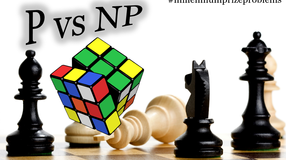How to Fold and Cut a Star
- YouWei
- Jul 3, 2016
- 2 min read

The Fold and Cut Theorem (yes, that is it's real name) states that for any shape made up of straight lines on a piece of paper, it is possible to fold the paper in such a way where the shape can be produced with a single cut of a scissors.
This article is not about the theorem, but it's about using this to produce a star, more specifically, a pentagram, with a single cut of the scissors.
Cutting a five pointed star implies that we have to have five fold symmetry. This means we have to divide the paper into fifths, radially. However, note that we have to divide 360° by 10, because of the lines of symmetries as shown.

We really have to divide 180° into fifths. Obtaining 36° allows us to produce a five pointed star with a single cut.
How can we obtain 36° seemingly out of nothing?
This identity will serve to be useful:

Now that we know (roughly) how to get our angle, we can start folding.
As usual with the Kirigami stuff, it's helpful to start with a square piece of paper. The first step is to (mentally) make the side of the square 4 units. This means that we can divide it like this:

We're really interested in the rectangle in red:

This rectangle has sides of 1 unit and 2 units, which means the length of its diagonal can be calculated as such:

We fold the bottom half of the square so we can focus on the top part.

Now we need to fold like this:

This essentially brings down the √5 onto the horizontal, forming 1 + √5.

Now we need to fold these two points together:

This will produce this fold line:

Thereafter, we need to bring the lower left corner to meet this fold line.

This angle is 36°.
We can continue folding this accordion style to make a wedge of paper with 36°.

Make a single angled cut on this wedge, open the paper to produce a five pointed star.
You can also cut patterns into it and get 'paper snowflakes' with five point symmetry.
==EndNote==
While Origami deals with folding paper alone, Kirigami deals with folding and cutting paper.
The story goes that George Washington approached Betsy Ross with ideas for the American flag, and she used this manoeuvre to produce a star from white cloth with a single cut, impressing him so much that he hired her to make the first American flag.
cos36° is interesting because the ratio is half of the golden ratio. This means that the golden ratio can be written in another form.















Comments